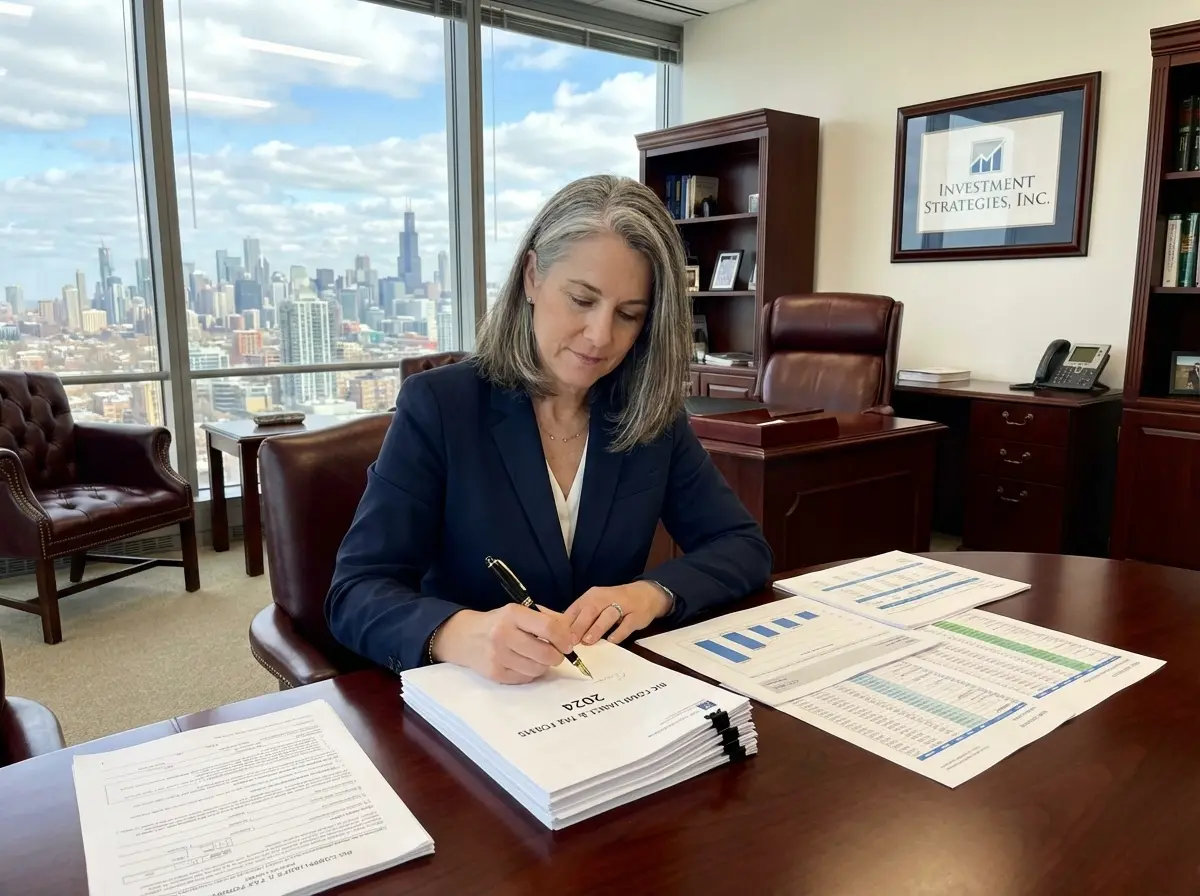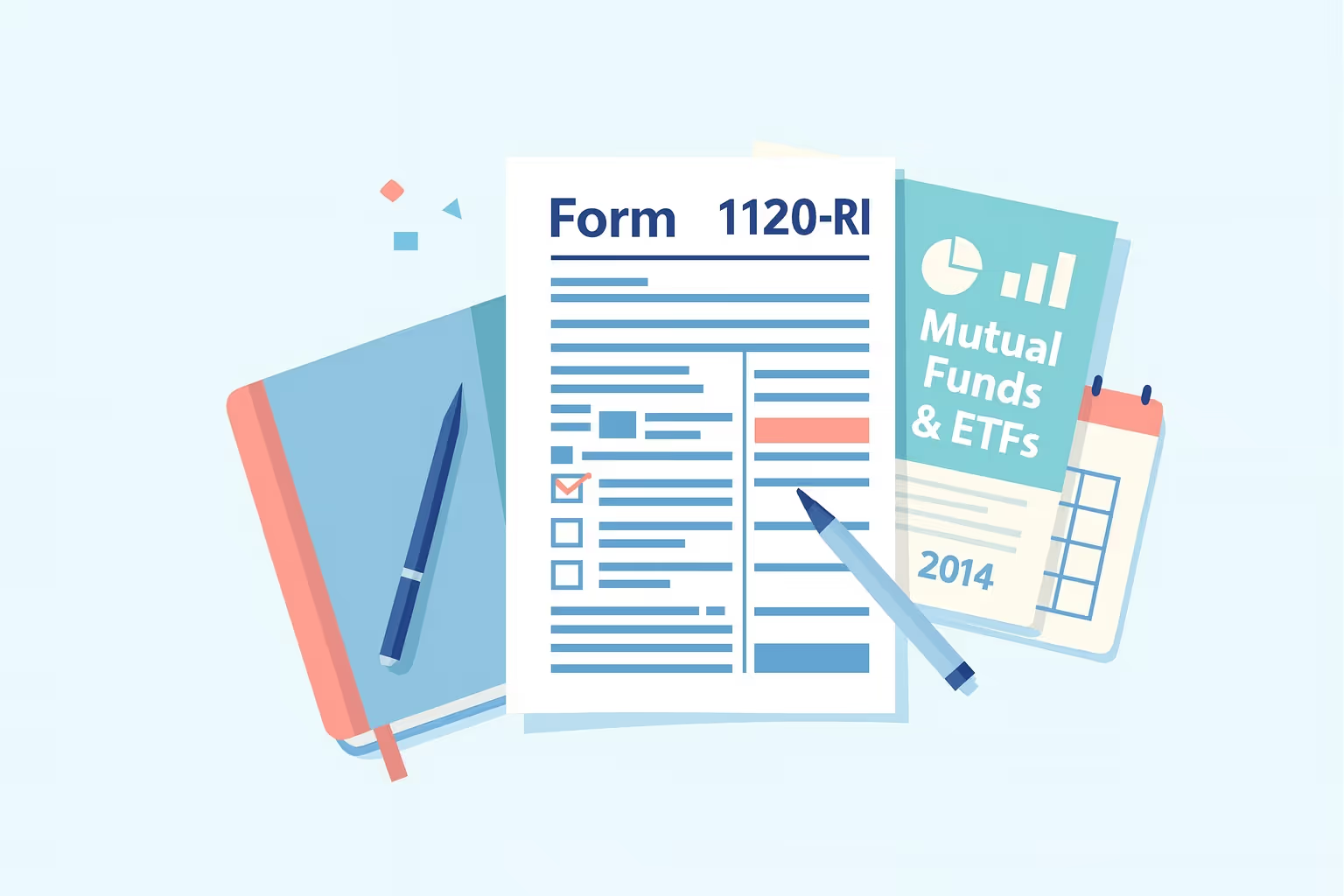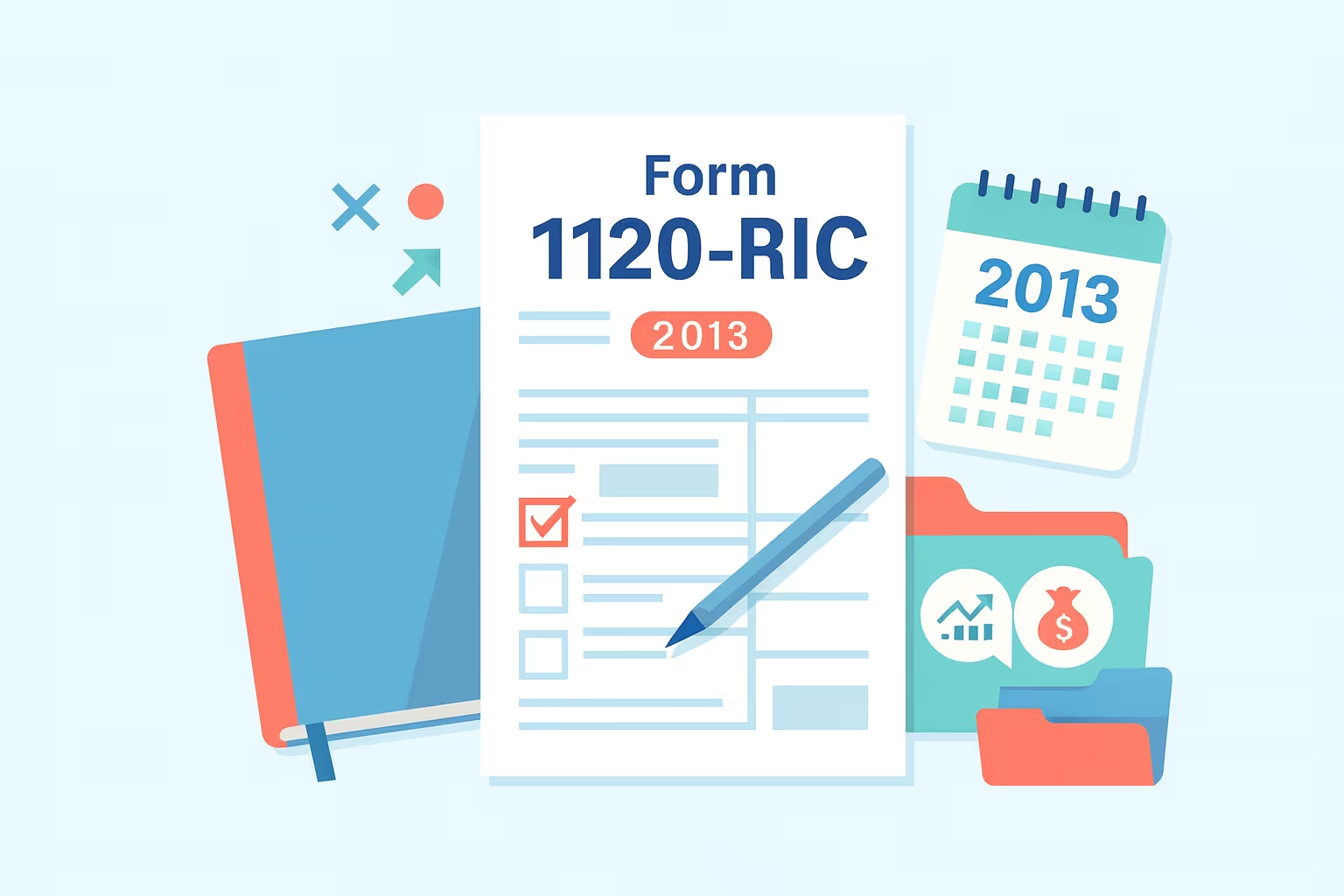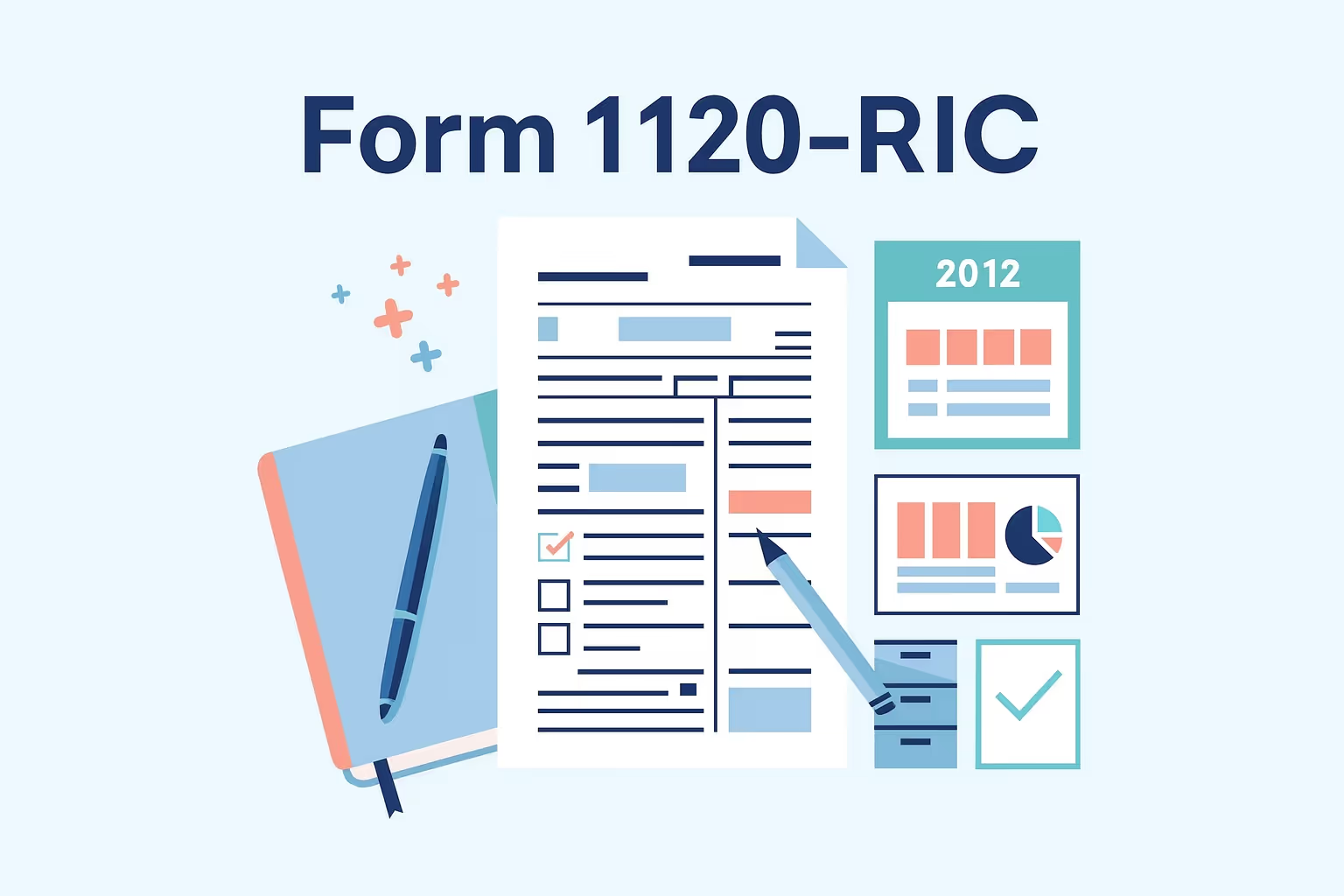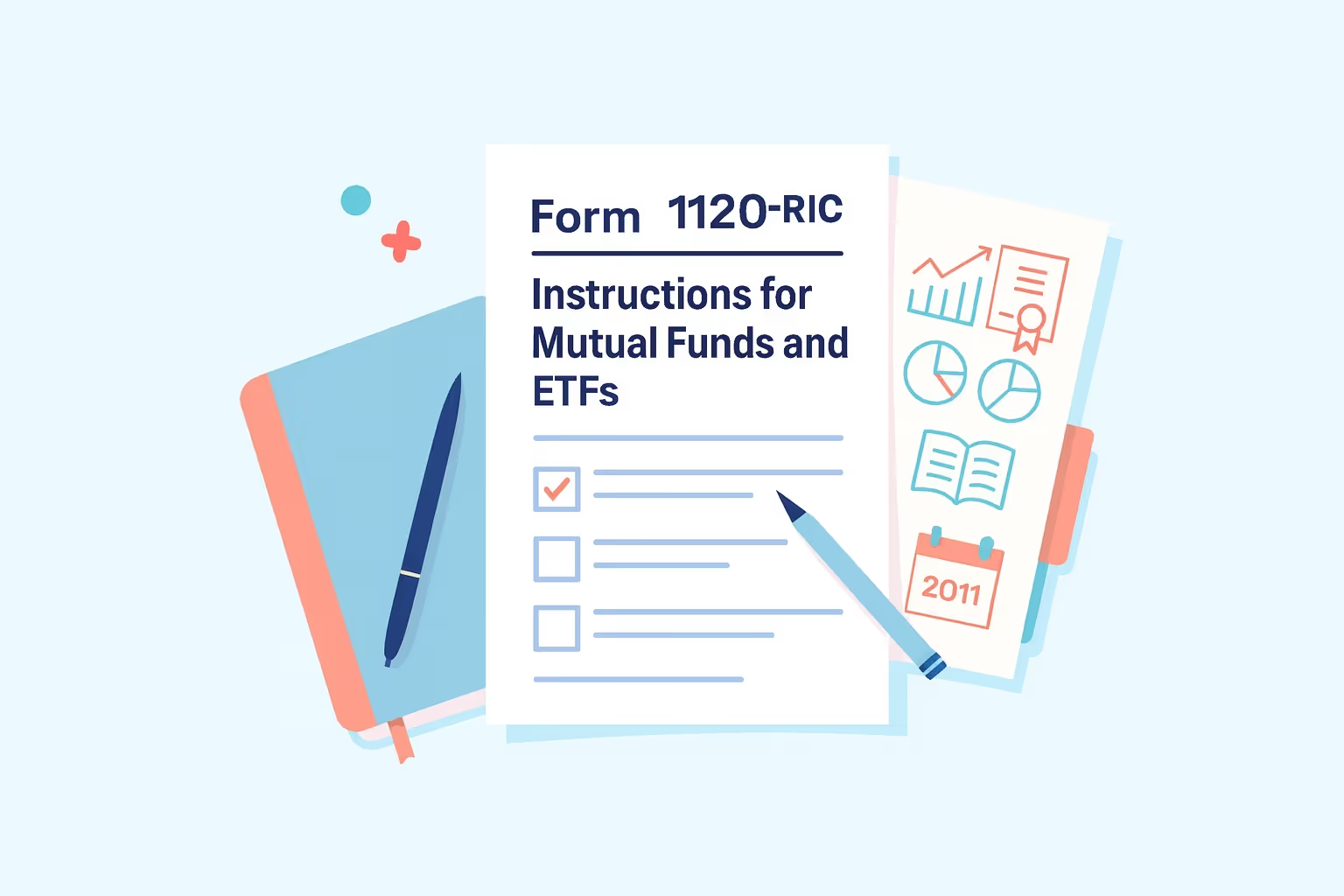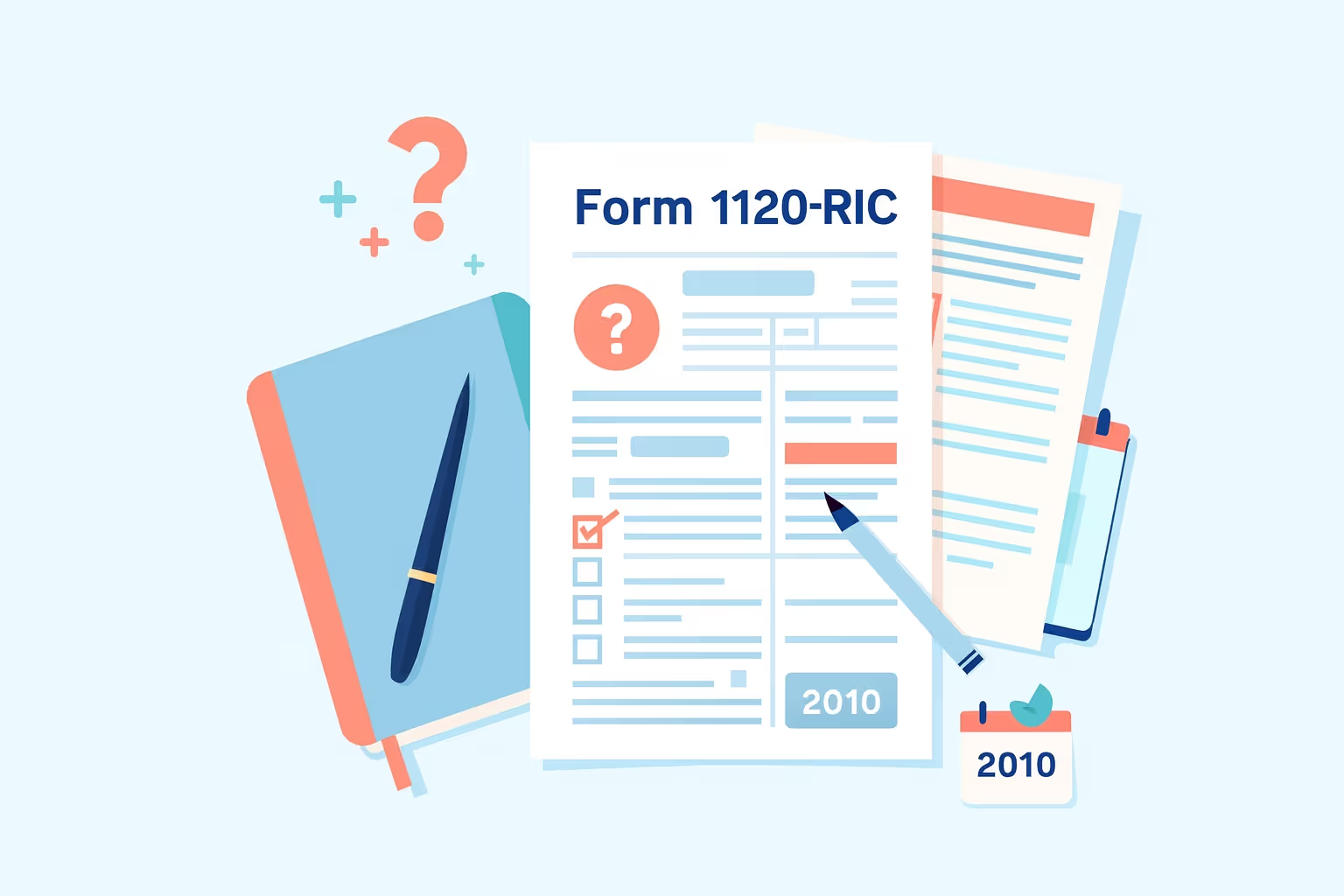
What IRS Form 1120-RIC (2018) Is For
IRS Form 1120-RIC (2018) is the income tax return used by regulated investment companies to report taxable income, capital gains, deductions, and credits for the 2018 tax year. Mutual funds, unit investment trusts, and similar investment companies file this form for federal income tax purposes. A company must also show it meets key RIC rules, including income, asset diversification, and required distribution levels. Using the correct Form 1120-RIC version ensures accurate filing and compliance.
When You’d Use IRS Form 1120-RIC for 2018
You use IRS Form 1120-RIC (2018) when a regulated investment company needs to file or correct its income tax return for the 2018 tax year. Below are the most common situations, presented in a clear, labeled, and descriptive format.
- Late Return Filing: This form is used when a company files a late return after missing the original 2018 tax-year deadline. Filing ensures the IRS receives the required information even after the due date has passed.
- Amended Return Submission: This form is used when updated records change taxable income, gains, credits, or other information that affects the federal tax calculation. An amended filing updates the IRS with the correct figures.
- IRS Notice Response: This form is used when responding to IRS notices about an unfiled or incomplete corporation income tax return. Providing the correct information allows the IRS to resolve the issue.
- Error Correction: This form is used to correct errors involving distributions, net income, or tax liability calculations. A corrected return ensures all amounts are accurately reported.
- Schedule or Attachment Updates: This form is used when updating schedules or attachments that affect capital gains, other income, or shareholder reporting. These updates help keep the company’s records consistent with IRS requirements.
- Final Return for a Closed Fund: This form is used when closing out a final return for a fund that ended operations in 2018. Filing the final return completes the company’s reporting obligations for that tax year.
RICs should also consider the statute of limitations, since older returns may still require filing even if refunds are no longer available.
Key Rules or Details for the 2018 Tax Year
The 2018 tax year introduced several rules that regulated investment companies must follow when completing IRS Form 1120-RIC (2018):
- Flat 21% corporate rate: The Tax Cuts and Jobs Act replaced the prior graduated system with a single 21% rate, which applies to the tax imposed on RICs.
- Corporate AMT removal: The alternative minimum tax no longer applies to RICs, simplifying parts of the corporation income tax return.
- GILTI requirements (Form 8992): RICs with interests in foreign corporations must calculate GILTI and include Form 8992 when the rules apply.
- Interest Expense Limits (Form 8990): Certain companies are required to use Form 8990 to document the limits on business interest deductions.
- Excise tax rules under Section 4982: Certain distribution levels may trigger an additional excise tax, separate from regular income tax.
- Use of 2018-specific instructions: Accurate reporting requires the use of correct 2018 schedules, forms, and line references, as rules differ from those in later years.
Step-by-Step (High Level)
Here is a simple way to complete IRS Form 1120-RIC (2018):
- Confirm basic details: Check the RIC’s status, verify the employer identification number, and make sure the entity is not treated as a personal holding company or domestic corporation under tax law.
- Gather records: Collect figures for earnings, profits, dividends, cash, payments, securities loans, and other securities activity. Review earlier notices, estimated tax payments, amounts already paid, and any filings with the Securities and Exchange Commission.
- Complete the form: Calculate total tax using the manner prescribed, confirm the RIC continues to qualify, and attach any applicable schedules listed on each page.
- Verify the timing: Note the due date, as filing after this date may result in penalties if the return is subject to additional tax.
- Assemble and mail: Sign the return and send it along with all required documents to update the IRS account.
Common Mistakes and How to Avoid Them
Common issues arise when a taxpayer prepares IRS Form 1120-RIC (2018). Examples include:
- Using the wrong tax-year materials: Filing for a past calendar year with current-year instructions or other forms can create mismatched entries. Use the 2018 version of all instructions and follow the related special rules.
- Incorrect asset reporting: Errors in total assets can impact gains and entries on Schedule D. Verify each figure by checking custodial reports, brokerage statements, and internal records.
- Overlooking exceptions: Some RICs miss certain exceptions that apply depending on the extent of investment activity. Review the 2018 guidance to confirm which exceptions apply to the fund.
- Late filing without explanation: Missing deadlines without reasonable cause can lead to processing issues. Include a brief explanation and any documents that support the timing of the filing.
What Happens After You File
After you file IRS Form 1120-RIC (2018), the IRS reviews the return and updates the company’s account. Paper filings take time, and processing generally moves more slowly for older or amended returns. The IRS may send a notice requesting clarification, missing schedules, or corrected figures. If the return shows a balance due, the agency will outline the available payment options and any applicable interest charges. Keep copies of all documents, as the IRS may request them during future reviews or correspondence.
Frequently Asked Questions (FAQs)
Can I still file a 2018 income tax return for an RIC?
Yes, the IRS accepts late filings for past years, and a RIC can still submit its 2018 income tax return. Penalties and interest may apply, but filing helps update the account and close out outstanding issues.
Do I need to file a corporation income tax return instead if my fund lost RIC status?
If a company does not meet RIC requirements for 2018, it must file a corporate tax return instead. This changes how income, gains, and distributions are taxed.
How do I handle past estimated tax payments when preparing the 2018 Form 1120-RIC?
List all estimated tax payments made for the 2018 tax year. The IRS records should match your internal statements, and any differences should be reviewed before filing.
Are investment companies required to amend earlier filings if new information appears?
Certain investment companies are required to submit an amended return when new records affect taxable income, gains, or shareholder distributions. If the IRS issues a notice, it has the authority to request changes.
Does my Employer Identification Number (EIN) affect how I file Form 1120-RIC?
Your employer identification number must match the records of the IRS. Ensure that your numbers are accurate and up-to-date to avoid delays in processing before submitting your return.
When should a fund file a final return for 2018?
A RIC files a final return if the fund ended operations during or after the 2018 tax year. Closing the account prevents future notices tied to that entity.







